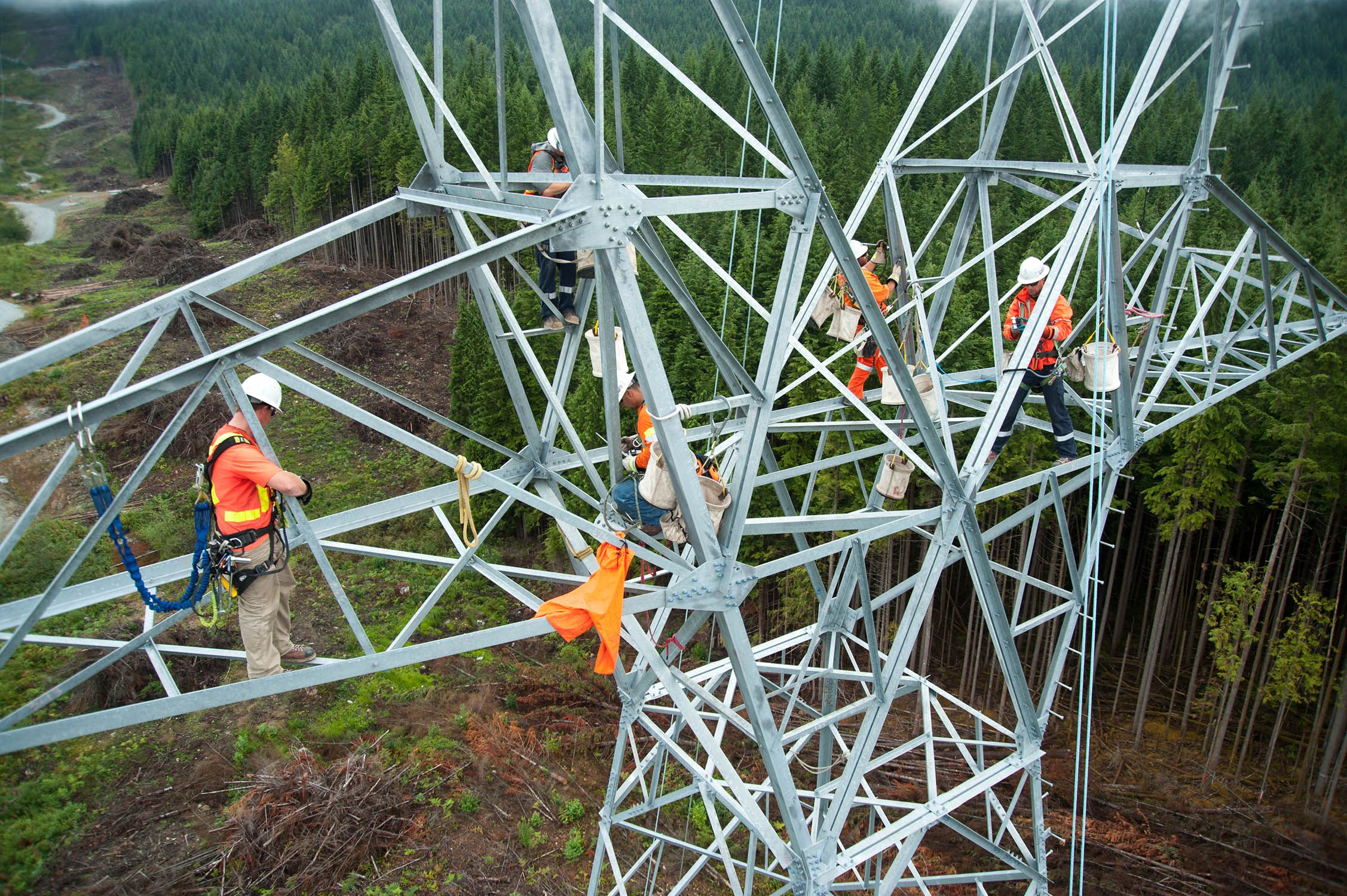Project News
ILM gears up for stringing operations

 The size and scope of the Interior to Lower Mainland Transmission Line project is hard to comprehend. The 250-kilometer (155-mile) project is one of the most ambitious projects Flatiron, with joint venture partner Graham, has taken on to date. From the operations base in Chilliwack, British Columbia, at roughly the halfway point on the project, it’s a 2.5-hour, 230-kilometer (143-mile) drive to one end of the project, and 45 minute and 30 kilometers (18.6 miles) drive to the closest tower site. There is a site on the project where the drive from one tower to the next is 2.5 hours on mountain roads. The direct route— where the line will eventually go—is over the top of a mountain.
The size and scope of the Interior to Lower Mainland Transmission Line project is hard to comprehend. The 250-kilometer (155-mile) project is one of the most ambitious projects Flatiron, with joint venture partner Graham, has taken on to date. From the operations base in Chilliwack, British Columbia, at roughly the halfway point on the project, it’s a 2.5-hour, 230-kilometer (143-mile) drive to one end of the project, and 45 minute and 30 kilometers (18.6 miles) drive to the closest tower site. There is a site on the project where the drive from one tower to the next is 2.5 hours on mountain roads. The direct route— where the line will eventually go—is over the top of a mountain.
Flatiron/Graham is transforming the landscape along the project site. Between excavation and erection, there is a lot of work in between, including logging, access road construction, clearing, blasting and foundation construction.
“Everybody is working well despite the different scopes of work,” said project manager Ken Tanner. “We have foresters clearing land where the line will go and stringing, both new kinds of work for Flatiron. These crews are working with guys building foundations, which is work more typical for us. But everyone works together, communicating and coordinating, so all goes smoothly.”
The project includes 642 tower construction sites, divided up into five geographic sections. Construction is scheduled incrementally, so each section is in a different phase of construction. Areas in high elevation are shut down for the winter; crews can’t access the sites which are buried under a few feet of snow. Crews hope to resume work in many of these areas sometime in April, but won’t resume work in the highest elevations until June. On lower elevation sites, work continues, including tower erection, foundation construction, clearing and access work.
“We’ve had a lot less snow compared to last year,” said project engineer RJ Hajiadem. “We can work in low areas, but are not working extensively through the winter in higher areas.”
In some places—depending on ground conditions—crews are using buried, steel foundations called grillage in place of more traditional foundations. A team of three carefully excavates and compacts dirt around the foundation site, then assembles and buries the grillage, ensuring it stays at the precise angle needed to anchor the tower.
This type of foundation is ideal for remote project sites and can be constructed by a small team in a few days. No concrete means no tricky access for concrete trucks on mountain roads and no waiting for concrete to set. Grillage foundations can be quite large—the biggest one on the project measures 4 meters (13 feet) high.
Once the foundations are complete, it takes a team of eight people five days on average to assemble and erect each tower. The towers are delivered to each site in pieces by truck, or in remote locations, by helicopter. When complete, the towers are between 24 and 70 meters (78 and 230 feet) high. Assembly is no easy job—crews spend hours harnessed in high above ground. Food and water are sometimes hauled up in buckets.
In addition to the typical safety risks seen on projects, the team on this remote job has to contend with some unusual hazards. Crews have reported seeing bears and at least one cougar on jobsites. In the winter, snowy roads have to be professionally assessed daily for avalanche risk.
Work will resume across the project when the snow melts, and crews this summer will begin the next major operation: stringing power lines between completed towers.
“It’s a significant operation we haven’t undertaken yet,” said Ken. “We’re excited to see a type of work Flatiron hasn’t done before and to see what kind of production rates we can get.”
Ken says the team is up for the challenge of this operation, and the other work that remains.
“We’ve seen success overcoming past challenges on the project, and we’ve done a lot to set us up for a good 2014 and 2015. The right people are in place, and they’re doing what needs to be done to have a successful couple of years to the finish line of the job.”
